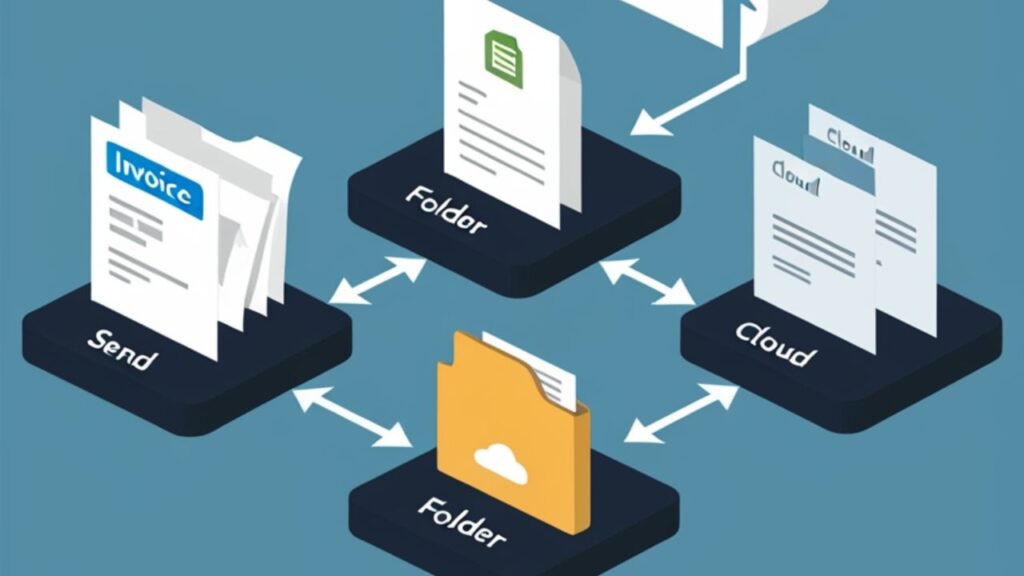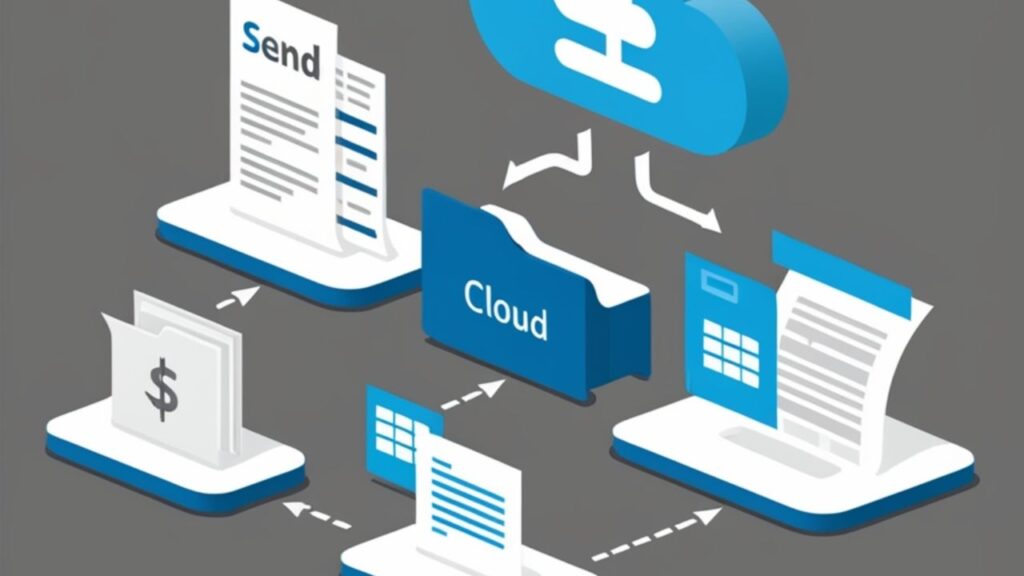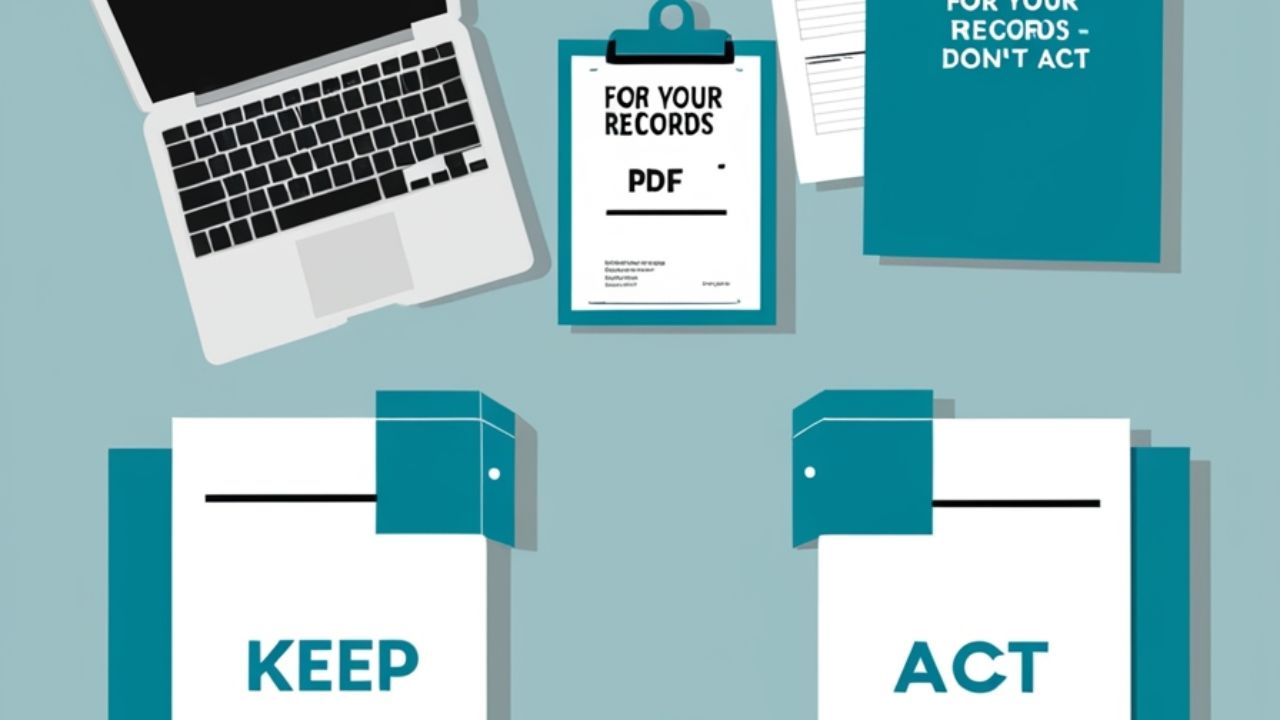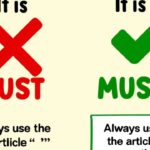“For your records” sounds correct and helpful. It tells someone to keep a copy for later. You guide them to store documentation safely. You add clear reference details. You show care and order. You make future checks easy and quick.
Use the plural form, “records,” in most cases. It fits folders, files, and repeating papers. The singular “record” suits one specific item only. You choose words that match the situation. This choice keeps communication tidy, simple, and respectful.
Place the phrase near the end of a line. Write, “Attached is the receipt for your records.” Share PDFs or scans for easy storage. Use alternatives when needed: to keep on file, for reference, or for documentation in formal notes.
What Does “For Your Records” Actually Mean?
“For your records” tells someone to keep a copy for later use. People save papers or files for documentation and quick reference. The phrase guides neat storage at home or work. You build a simple trail with receipts, forms, and notes that you can check anytime.
Use the phrase when you share invoices, reports, or signed pages. Write clear lines like, “I attached the receipt for your records.” Store PDFs in folders for record-keeping. When you prefer variety, use “to keep on file” or “for reference.”
Practical Definition
- “For” shows purpose or use; you share items for documentation.
- “Your” points to the receiver; the items belong in their reference files.
- “Records” means saved papers or digital files you keep for record-keeping.
Why It Matters
- You improve clarity and reduce confusion; readers know the item is for documentation, not action.
- You build an audit trail; organized record-keeping supports reviews, taxes, and compliance checks.
- You show respect and care; tidy reference files strengthen trust and keep work moving smoothly.
Understanding the Difference: “Record” vs “Records”
| Term | Meaning | Usage Example |
| Record | One specific documented item | “Keep this document for your record.” |
| Records | A collection or ongoing file of documents | “Please save these forms for your records.” |
The Plural Dominance
- Most messages include several items. The plural suits folders and files. It improves clarity and supports neat record-keeping.
- Offices and schools file many pieces. The plural matches real workflows. It strengthens professional tone and reliable documentation.
- Use the singular only for one defined item. In everyday notes, choose the plural. It guides quick reference and cleaner organization.
See also : Embed vs Imbed: Meaning, Usage & Key Differences
Singular Uses (Niche Cases)
- Use the singular record when you point to one defined item, like a single lab result. You still support neat documentation and clear reference.
- Choose singular record for a unique entry in a database or ledger. You guide tidy record-keeping and reduce mix-ups.
- Write singular record when policy names one file, such as a lone consent form. You keep clarity and consistent communication.
Is “For Your Records” Grammatically Correct?

Yes, “for your records” is completely grammatically correct. It is widely accepted in both British and American English.
Grammatical Structure
- The phrase works as a prepositional group that shows purpose. It adds clarity and guides neat documentation.
- Writers place it after the main action in a sentence. This order supports smooth communication and steady professional tone.
- The words link as “for” + “your” + “records.” They point to reference files and ongoing record-keeping.
Tone & Style
- Use a polite, steady voice with short active lines. You keep clarity, support neat documentation, and maintain a professional tone.
- Place the phrase near the close and link ideas with simple transitions. You improve communication, guide quick reference, and aid reliable record-keeping.
- Vary sentence length and structure while keeping words simple. You avoid repetition, preserve clarity, and deliver smooth readability.
Common Scenarios Where You Say “For Your Records”
This phrase is used in multiple real-world settings. Understanding when and how to apply it can sharpen your professional communication.
When Sending Documentation
- Attach the file and state the action first. Write, “I attached the receipt for your records.” You support neat documentation and smooth handoffs.
- Group related items in one line. Name each file clearly. You protect clarity and quick reference for future checks.
- Add a closing note about storage. Mention the folder or link. You encourage careful record-keeping and maintain a steady professional tone.
In Legal and Compliance Communication
- Send signed agreements with a clear note: “Included for your records.” You strengthen compliance, build an audit trail, and show a steady professional tone for attorneys, regulators, and clients. Name files precisely and date each document.
- Provide policy updates and disclosures in one packet. You support reliable documentation, fast reference, and consistent record-keeping across reviews and audits. Add a cover line that lists contents, retention periods, and contact details.
- Store PDFs in controlled folders and share links with limited access. You protect compliance, preserve the audit trail, and maintain trustworthy documentation. Use version numbers, checksum notes, and renewal reminders to prevent confusion during inspections.
Education & Academia
- Send transcripts and certificates with a clear line: “Included for your records.” You support neat documentation for students and families. Add dates and student IDs for quick checks.
- Share syllabi, grading rubrics, and feedback sheets. You help teachers and parents keep organized record-keeping and fast reference during meetings. Use simple file names and stable folders.
- Provide letters, awards, and attendance notes in one packet. You maintain clarity and dependable documentation for school reviews. List contents on a cover page and note storage guidance.
Personal Finance or Household Management
- Send utility bills, invoices, and warranties with a short line like “attached for your records.” You support tidy documentation and quick reference. Date each file, add the account number, and keep one folder for home, car, medical, and school items.
- Build a monthly routine. Save statements, categorize receipts, and reconcile totals with your budget sheet. Use clear file names and a simple index. This rhythm strengthens record-keeping, improves documentation, and speeds lookups during repairs, returns, or renewals.
- Store scans in a secure cloud folder and keep one offline copy. Share read-only access with family decision-makers. Note retention periods for taxes, warranties, and insurance. These habits sharpen reference, preserve dependable record-keeping, and maintain household documentation all year.
Formal vs Informal Contexts: Where It Fits Best
Formal Settings
- Use the phrase for your records in business letters and email closings. Attach the file first, then add the line. You keep clarity and strong documentation. You help the reader file papers quickly in the right place.
- Share contracts, policies, and statements in one packet. Name each file with date and type. You support record-keeping, maintain a steady professional tone, and speed future reference during audits, reviews, or meetings.
- Store PDFs in managed folders and note retention time. Give read-only links to the right people. You protect compliance, preserve the audit trail, and strengthen ongoing documentation across departments and teams.
See also : Anyone Else vs Someone Else vs Everyone Else Guide
Informal Usage (Less Common)
- Use the phrase with friends when you share receipts or split bills. Write a short line and attach the file once. You keep clarity and smooth documentation. Add a date in the file name. Everyone finds the receipt fast later.
- Send team notes to parents or club members. Share the schedule and one line at the end. You guide quick reference and neat record-keeping. Use simple folders on the phone. Keep names short and easy to read.
- Choose gentle alternatives in chats: “just in case,” “to keep on file,” or “for reference.” You protect tone while you keep order. These phrases support clean documentation and steady clarity without sounding stiff during daily conversations.
When to Use Singular “Record” – And Should You?
The singular form “record” is technically correct, but it’s rare and sounds slightly off unless the context specifically refers to a single documented item.
Examples
- I attached the signed contract for your records. This line guides neat documentation and quick reference during audits or meetings.
- Please store this transcript to keep on file. You support tidy record-keeping and steady clarity for school forms and future checks.
- I uploaded the appliance warranty for reference. You build simple organization at home and maintain a useful personal archive for repairs and returns.
Best Practice
Unless you’re dealing with a specific single entry that has already been defined, use “records.”
Analyzing Real Examples: “For Your Record” vs “For Your Records”
| Sentence | Correctness | Reason |
| “Here is the form for your record.” | Questionable | Sounds incomplete or overly specific |
| “Attached is the form for your records.” | Correct | Standard business communication |
| “We kept one copy for your record.” | Acceptable | If explicitly referencing one item |
| “This is just for your records.” | Correct | Most commonly used format |
Alternative Phrases That Can Replace “For Your Records”
| Alternative Phrase | Tone | When to Use |
| For your reference | Neutral | Professional emails or memos |
| Just in case you need it | Casual | Informal or friendly communication |
| To keep on file | Formal | Legal, compliance, academic settings |
| For documentation purposes | Formal | Audits, financial records |
| Copy enclosed | Neutral | Cover letters or mailing physical docs |
Example Sentence
“I’m attaching a duplicate copy to keep on file, just in case you need it later.”
Tone, Clarity, and Purpose in Business Communication

- Use direct words and clear actions. You keep clarity high and reduce noise. You support strong documentation that teams can trust during reviews.
- State the purpose early. You guide readers to the next step. You enable quick reference and consistent record-keeping across projects.
- Maintain a respectful tone. You choose simple sentences and precise terms. You strengthen professional communication and protect reliable compliance practices.
Why It Matters
- You guide readers to store important papers correctly. This habit builds clarity, supports dependable documentation, and speeds future reference during audits, renewals, or disputes.
- You reduce mistakes and repeated requests. Clean folders and named files improve record-keeping, protect compliance, and keep work moving without delays.
- You show care and professionalism. Consistent wording strengthens trust, maintains communication standards, and preserves a reliable audit trail for teams and clients.
Using “For Your Records” in Digital Communication
Digital tools like email and cloud storage have made record-keeping easier. This phrase still applies, especially when handling attachments or documentation.
Best Practices for Email
- Write a clear subject like “Invoice attached for your records.” State the action first. Add a short closing line. You keep clarity strong and help the reader file items fast.
- Attach clean PDFs with simple names and dates. Mention the folder or link in one sentence. You support neat documentation and quick reference for later checks.
- Group related files in one email. Avoid repeating the phrase many times. Use a polite sign-off and contact details. You maintain a steady professional tone and reliable record-keeping.
When Sharing Files
- Pick stable formats like PDF. Name files with dates and short labels. Add one clear line such as “Attached is the receipt for your records.” You support documentation, improve clarity, and enable quick reference during checks.
- Share trusted links with read-only access. Note the folder path and version, like v1.1. Include a one-sentence summary of contents. These steps strengthen record-keeping, protect compliance, and maintain a steady professional tone.
- Group related items in one folder or a zip. Avoid duplicates and confirm each link opens. Keep a cloud copy and a local backup. This grouping preserves the audit trail, ensures clean documentation, and supports simple long-term reference.
Mistakes to Avoid with “For Your Records”
- Avoid repeating the phrase in one message. Use it once with grouped items. You keep clarity, protect clean documentation, and support smooth record-keeping with one tidy closing line.
- Avoid placing the phrase at the start. State the action first, then add it. You maintain professional tone, improve grammar, and speed future reference.
- Avoid vague files and messy names. Attach clear PDFs with dates and labels. You strengthen organization, preserve an audit trail, and support reliable compliance across teams.
Overuse
Overuse happens when you repeat “for your records” in the same message. You make the note sound robotic and long. You keep clarity by using the phrase once. You protect professional tone and smooth documentation with short sentences and grouped attachments.
Instead of repeating the phrase, list items together. I attached the contract and receipt for your records. You support reference needs and better record-keeping. You stay concise with one closing line, clean subjects, and simple file names.
Misplacement in Sentences
Misplacement happens when you drop the phrase in the wrong spot. You place it where it breaks flow and confuses meaning. Put it after the main item or action. This placement improves clarity, strengthens grammar, and keeps a steady professional tone in short notes.
Avoid openings like “For your records the file is attached.” Write the action first. Say, “I attached the file for your records.” Group items and close once. This order supports reference, protects clean documentation, and helps daily record-keeping across school, home, and office.
How “For Your Records” Varies Across Professions
| Industry | Common Documents Sent “For Your Records” |
| Legal | Contracts, agreements, court documents |
| Finance | Invoices, bank statements, transaction receipts |
| Education | Certificates, grades, attendance records |
| Healthcare | Medical history, test results, vaccination forms |
| HR/Recruiting | Offer letters, performance reviews, onboarding docs |
Quick Reference Table: Usage, Meaning & Context
| Phrase | Correct? | Used In | Better Option If Needed |
| For Your Records | Yes | All formal communication | “For your reference” |
| For Your Record | Rare | Specific item only | “To keep on file” |
| Attached For Records | No | Awkward, lacks clarity | “Attached for your records” |
| Copy Enclosed | Yes | Mail or cover letters | “For documentation purposes” |
Final Thoughts
Use for your records with care and purpose. You share copies to support documentation and future reference. Place the phrase after the action line. Keep sentences short and tidy. Group files logically. This approach builds trust, reduces confusion, and strengthens everyday communication.
Finish notes with one clear closing. Write, “I attached the receipt for your records.” Avoid repetition. Choose precise subjects and clean file names. You guide record-keeping habits, improve clarity, and maintain a steady professional tone across school, home, and workplace messages.
FAQs
What is the meaning of “for your record”?
It means information is provided for you to keep as reference or documentation for future use.
What does just for your record mean?
It means sharing information only for your personal reference, not requiring any action or response.
What is another way to say “for your records”?
You can say “for your reference,” “for documentation,” or “to keep on file.”
What does it mean to keep records?
It means maintaining written or digital information for tracking, verification, or future reference purposes.

Join Bibcia on a journey to master English grammar. Discover easy lessons, writing tips, and practical examples designed to make learning grammar simple and effective.










